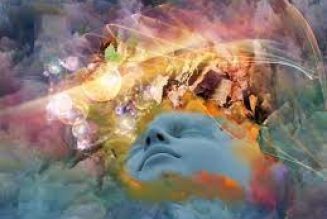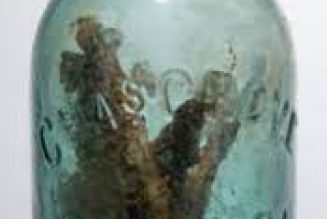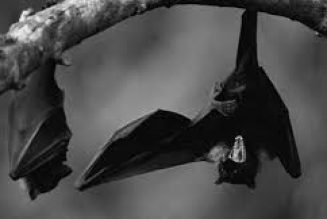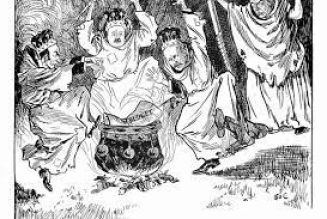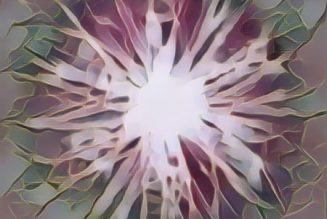In African tribal traditions, witchcraft is part of the accepted supernatural landscape and is generally something to be feared.
Study of African tribal religions illustrates the African ancestry of modern Vodun, Santería and Candomblé.
There is a fairly universal belief in a supreme God, who manifests himself in light and brightness: a shining, snowcapped mountain, or the light streaming through a sacred grove of trees.
But such a God is remote, accessible only to the priests or elders.
God inspires great awe in his people, causing them to fear and avoid his symbols, such as thunder and lightning.
The birth of twins is also a sign from God, creating reverence for the twins’ divinity and their isolation from the rest of the community.
The spirits of the dead, or the “shades,” however, are regarded as alive and able to communicate the needs of humans to the divines.
They are always about, participating in daily living, evident in the rustling of leaves, dust spirals in the earth, currents in the river.
Southern Africans divide the shades into two categories: the deceased relatives of any particular family and the founding heroes, male or female, who define a community, chiefdom or region.
To keep the ancestors happy, living relatives offer food, drink and animal sacrifice.
Offering feasts must be attended by the ancestor’s kin, since the meal itself is a communion between the living and the dead.
Family members air and resolve any quarrels before the offering, since Africans believe that festering, unspoken anger is the root of witchcraft.
For the tribal African, the power of evil is everywhere, abetted by witches and their familiars but brought on by anger, hate, jealousy, envy, lust and greed—all the vices men observe in themselves and their neighbors.
It can even be brought on by laziness, as certain evil persons raise the dead to do their work for them (see zombie).
Evil does not come from the shades, nor do the shades possess a living person. Both are outside influences caused by witchcraft.
Members of the Nyakyusa tribes describe witchcraft as a “python in the belly,” while the Pondo people call it a “snake of the women.”
As in Europe, most witches come from the ranks of women, poor men and young people.
Others depict witchcraft as a baboon, and members of the Xhosa tribes see it as a fantastic hairy beast with exaggerated sexual organs.
People accused of witchcraft within a tribe often confess, attributing their evil to quarrels with wives, children or co-workers.
If witchcraft has caused sickness, no recovery is possible without the witch’s confession and subsequent goodwill toward the victim.
In his groundbreaking studies of the Azande tribes in the late 1920s, Professor E. E. Evans-Pritchard found that the Azande believe witchcraft, or mangu, is a hereditary trait found in the stomach of a witch.
Such an abdominal condition results in an oval, blackish swelling or sac containing small objects located near the bile tract.
The Azande admit not seeing this sac while a person is alive but claim to have extracted it in autopsy.
Professor EvansPritchard speculated that the Azande were describing the gall-bladder.
Nevertheless, the Azande attribute any misfortune, however, small, to mangu.
Many people who possess mangu do not know it; since the spirit of witchcraft leaves the witch at night to attack the victim’s spirit, such dirty work could occur while the perpetrator is asleep and unaware.
Nightmares are considered witch attacks.
Sons of male witches inherit the condition from their fathers, while daughters receive mangu from their mothers.
Children’s mangus are small and inexperienced, so children cannot be accused of witchcraft until they are older.
The Azande also believe that witchcraft emits a small, bright light, similar to that of fireflies or sparks, which is invisible except to other witches or to witch doctors, who are trained witch-hunters.
The Azande attribute little witchcraft activity to sorcery.
Sorcery is possible, but unlikely unless a man has seen an adandala—a species of wildcat associated with witchcraft, the sight of which is fatal—or has touched his wife’s menstrual blood or seen her anus.
Witches among the Azande call each other to meetings where they learn each other’s techniques, discuss crimes and rub their bodies with a special ointment called mbiro mangu.
A particularly successful supernatural killing may be celebrated by feasting on the revived body of the victim.
Their familiars, both animal and human, accompany them and goad them on to greater evil.
Whereas European witches were said to prefer cats, dogs and toads as familiars, African witches chose owls, bats, hyenas, baboons, zombies or, among the Xhosa, “hairy dwarves.”
To identify a witch, relatives of the sick first consult the iwa oracle, a rubbing board operated with a wooden instrument.
The names of possible suspects are placed before the iwa, and the oracle selects the culprit and his or her accomplices.
Then the family verifies the witch’s name via the benge oracle: chickens are given poison while a list of names is read aloud.
If a chicken dies while a particular person’s name is called, that person is guilty.
At that point, a wing from the unlucky chicken is cut off and attached to a stick like a fan.
One of the sick man’s relatives takes it to a deputy of the neighboring chief, to maintain impartiality, and the deputy carries the fan to the home of the suspected witch.
The suspect’s reaction and apparent sincerity are most important; if the suspect claims innocence and begs his mangu to stop bothering the sick person, recovery may occur.
If not, the procedure is repeated.
If the suspect is a respected figure in the community, the relatives may announce they know witchcraft is behind their relative’s illness without naming names.
Their discretion in the affair appeals to the pride and honor of the suspected witch, and he may stop the spell in appreciation.
Members of the Tswana peoples deny the possibility of an uncontrollable mangu; for them, all witchcraft involves malice aforethought.
They do, however, distinguish between “night witches” and “day sorcerers.”
Day sorcerers, called baloi ba motshegare, use magic to inflict harm through the use of herbs and other medicinal preparations on a specific enemy and do not practice witchcraft habitually.
African witchcraft Night witches, or baloi ba bosigo, are mainly elderly women who gather at night in small groups and then travel about the countryside bewitching the unfortunate.
Instead of wearing clothes, they smear their bodies with white ashes or the blood of the dead.
Admission is open to anyone, but the applicant must profess her zeal by causing the death of a close relative, usually a firstborn child.
Initiates receive an ointment that allows them to wake instantly and join their colleagues when called.
Some tribes say that a special medicine is injected into the witch’s thumb, and when her thumb itches, she will awake and depart.
Among their alleged activities is the exhumation of newly buried corpses, which the night witches accomplish by using a special magic that makes the body float to the surface.
The witches then take whatever body parts they need for their spells and medicines.
Walls and locked doors cannot keep a witch from entering a victim’s house; once inside, the witch cuts her victim and inserts small stones or fragments of flesh that will sicken him and eventually cause death unless treated.
Night witches choose owls as their familiars and ride on hyenas to cover great distances, with one foot on the hyena’s back and one on the ground.
Members of the BaKgatla tribe say that the witches make their own hyenas from porridge and then activate them with special medicines.
Although beliefs in night witches are widely held, many Africans take such stories lightly, acknowledging that no one has seen baloi ba bosigo at work.
But the activities of day sorcerers are taken seriously, as many people have seen the results of go jesa (“to feed”), or the practice of putting poison in food or drink. In some accounts the poison changes into a miniature crocodile, gnawing away at the victim’s insides until he dies in pain.
But most accounts describe true poison, acting so slowly that suspicions are not aroused until the victim is seriously ill or dying, and making identification and indictment of the poisoner very difficult.































